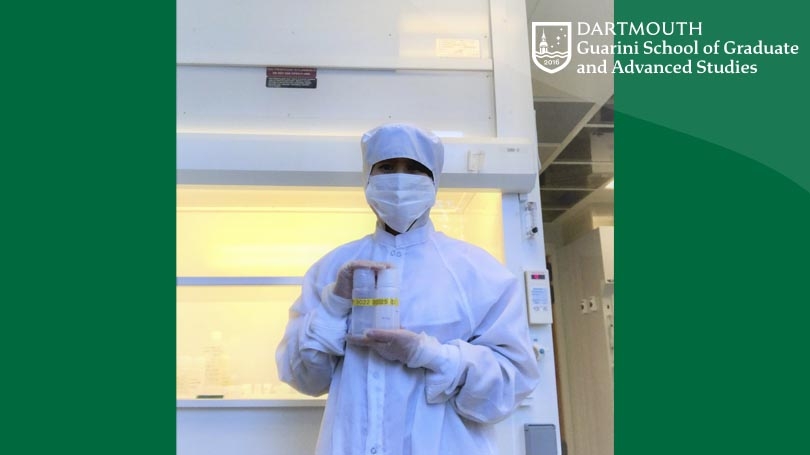Long-term paleoclimate records show that the Earth's past climate has repeatedly experienced large, abrupt climate shifts with major ecological impacts. Such drastic shifts are of great interest as they give clues to controls and sensitivity of future extreme climate response.
The Younger Dryas (12,900 to 11,600 years ago) is arguably the most studied example of abrupt climate change. This event was a cooling period that disrupted the prevailing warming trend, Bølling-Allerød, and briefly returned to glacial conditions in mid- to high- latitudes in the Northern Hemisphere. The cooling is well recorded in Greenland ice cores as wells as other paleoclimate records in the Northern Hemisphere. The records show that the temperatures in Greenland dropped by ~4-10 ºC and persisted for ~1,300 years. The cooling event is thought to have resulted from the slowdown or cessation of deep-water formation in the North Atlantic Ocean. This then promoted the cooling in the North Atlantic region and southward expansion of sea ice. The reduction of northward heat transfers warmed the southern high latitudes by a process referred to as the bipolar seesaw pattern. The question of what triggered the cooling initiation is highly debated. The proposed trigger scenarios of the cooling include 1) catastrophic freshwater drainage of proglacial Lake Agassiz via the Great Lakes, to the northeast Atlantic and/or the Arctic Oceans 2) a meteorite impact-related partial destabilization and melting of the Laurentide Ice Sheet, which largely covered Canada, and 3) major sulfate (SO42-) aerosol loading in the stratosphere from the explosive eruption of the Laacher See volcano (12,930 ± 40 years before 2000 A.D.) in Eifel, Germany. However, the physical evidence for each of these triggers remains elusive.
Recently, studies in the Greenland Ice Sheet Project 2 (GISP2) ice core found evidence for the latter two scenarios. The GISP2 findings include an impact of an unusual platinum (Pt) enriched iron meteorite (Petaev et al., 2013) and the Laacher See eruption (Baldini et al., 2018) at the onset of the Younger Dryas cooling. In contrast, our recent analyses of another Greenland ice core (GRIP ice core; Seo, unpublished data) show no chemical evidence of the two events at the cooling onset. Instead, the GRIP records indicate that a series of volcanic eruptions in northern Iceland occurred following and coinciding with the cooling onset. Additionally, we find a 24-fold increase in extraterrestrial osmium (Os) ~80 years after the cooling initiation, which is suggestive of a meteorite impact. However, the associated sample lacks a typical meteorite chemical enrichment, such as iron (Fe) and nickel (Ni). Osmium isotope compositions combined with Pt, Ir, and Os concentrations are robust tracers of an extraterrestrial impact. Therefore, my research aim is to investigate the two cooling trigger scenarios and untangle the above findings using Pt, Ir, and Os concentrations and Os isotope compositions across the cooling transition in the GISP2 ice core.
With the help of the Guarini Alumni Research Award, I have obtained bottles and digestive vessels needed for storing ice-melt water samples and the Pt, Ir, and Os separation chemistry. Due to COVID-19 restrictions, technical difficulties, and sample shipping issues, this project has been substantially delayed. During this time, I have modified and tested the Pt filament cleaning method to improve Os isotope measurements using Negative Thermal Ionization Mass Spectrometry (N-TIMS). Additionally, a measurement technique using Channeltron detectors implanted on the N-TIMS is being established. The detectors will allow high sensitivity and high precision measurements of ultra-low level Os concentrations (~10-15 gram per gram of ice) and isotope compositions in the GISP2 samples.
The GISP2 samples are now back in line for processing. The GISP2 samples will be decontaminated by shaving off the outer contaminated surface in a HEPA filtered hood in a walk-in freezer at -17 oC. The clean inner-most core samples will be melted and processed for Pt, Ir, and Os separation. To prevent modern-day dust/pollution contamination, all ice core chemistry will be performed under a ULPA-filtered laminar flow hood. Once samples are processed, I will measure Pt and Ir concentrations using Triple Quadrupole Inductively Coupled Plasma Mass Spectrometry (ICP-QQQ-MS) at Dartmouth Trace Element Analysis Core and Os isotope compositions using N-TIMS at Dartmouth Radiogenic Isotope Geochemistry Laboratory.
This project will allow an unambiguous confirmation of the meteorite impact discovered in the GISP2 ice core and tie it to that discovered in the GRIP ice core. Additionally, it will allow verification of the multiple eruptions in Iceland and a search for signals of Laacher See volcanic eruption in the GISP2. I expect that this study will provide an insight into whether extreme natural events can drastically affect climate in a short period. It may also permit synchronization of the two Greenland ice cores using Os isotope compositions.
